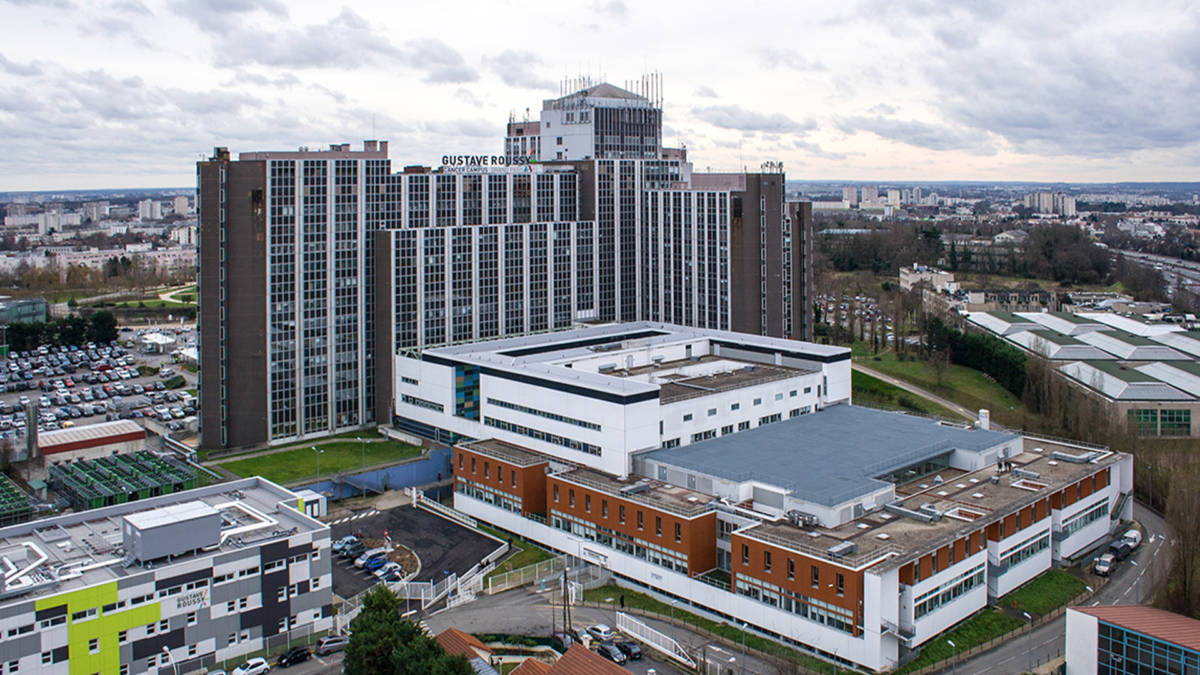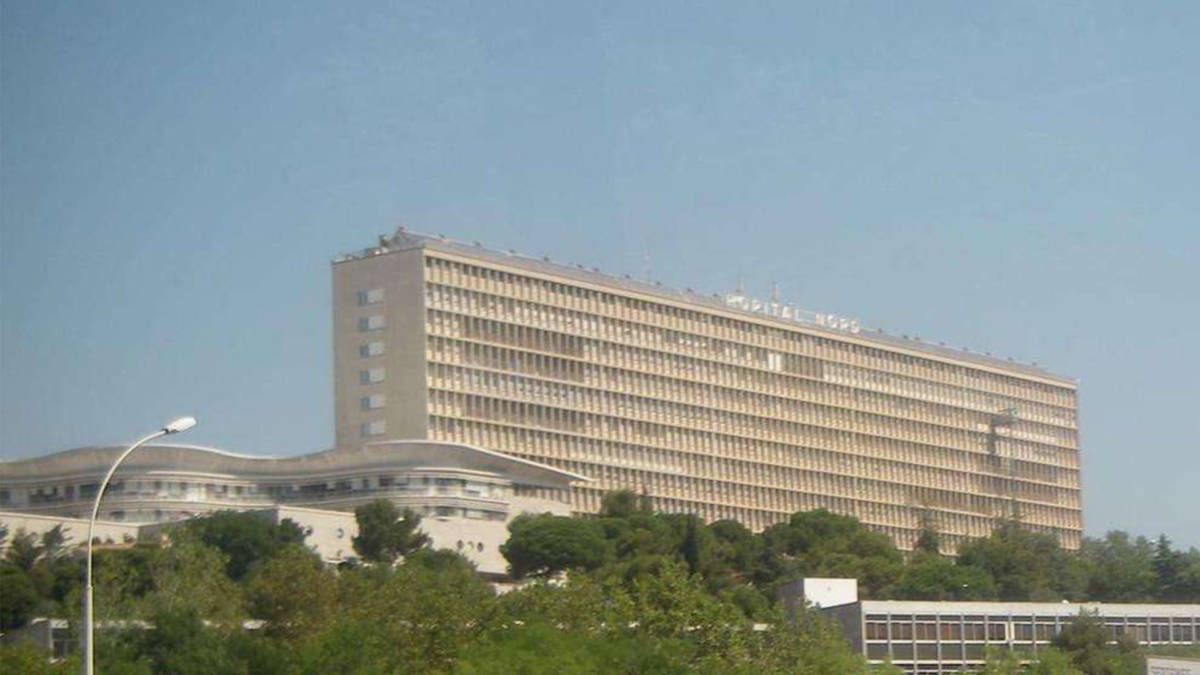Stéphane Pardoux : I find it interesting to talk to the architects who design our work environments. The Créteil building, which you designed, is architecturally successful, attractive, well integrated and well lit. Despite this, after it had been operating for a few months, the A&E staff, although very satisfied with the new buildings and their working conditions, said that the building is too large. My predecessor’s job was to insert programmes that were not planned at the outset. We could say that this isn’t a serious problem, that the buildings will always be there and that they can always be used for something else. But in the case of Créteil, which I know well, my job for 5 years has been to reduce the hospital’s debt burden and thus to shelve a number of projects in order to achieve an acceptable operating margin. These issues must be taken into account in any conversation about the Hospital of the Future. Size is directly linked to investment.
I find it interesting to talk to the architects who design our work environments.
#hôpitaldufutur : The economic aspect of projects is clearly a parameter that must be taken into account for the Hospital of the Future. But what can we, as architects, do when we have to respond to a brief, a set of specifications, and a pre-established level of capacity?
Stéphane Pardoux : Project consultants provide clients with strategic advice from the early stages. We knew as soon as certain recent projects began operating that they were too ambitious, or even much too large, and placed the hospital in financial trouble. It was impossible to achieve a return on investment for these organisations, which are now fragile. You’re right that the architect can’t be expected to stand in for the client. There’s a complex system of administrative supervision for which the client is responsible. But the Hospital of the Future, which is seen as a public asset in the western world as it endeavours to learn to live more frugally, is a collective responsibility. We must face facts: France has become accustomed to building oversized hospitals. For example, we have to address the question of hospital foyers. As far as I know, there are no private hospitals with foyers such as those to be found in the public sector.
But the Hospital of the Future, which is seen as a public asset in the western world as it endeavours to learn to live more frugally, is a collective responsibility
#hôpitaldufutur : Programmes have been more economical in terms of floor area since Hôpital 2007 [a raft of measures concerning the performance and governance of hospitals introduced by the French government], but there are also different cultures among clients. We’ve visited hospitals in northern Europe: floor area ratios are twice what they are here. In France we have ratios of around 1.5, whereas in northern Europe they’re at least 2.2. There’s as much space give over to circulation as there is useable floor area.
Stéphane Pardoux : We know of several examples of hospitals that have been left unable to cope following very large projects. The responsibility lies above all with the hospitals and the public authorities, but this question cannot be ignored in conversations about the hospital of the future. The example of the Villeneuve St-George Hospital is particularly striking: the construction of a new extension has forced it to shelve the renovation of its high-rise building because it’s defaulting on its payments. Sure, it’s a fine architectural statement, but that’s no longer enough. At what point do we decide whether it’s sensible or not? And is it the responsibility of actors who are not the commissioning bodies to make that call?
At what point do we decide whether it’s sensible or not ?
#hôpitaldufutur : What interests us is to come up with a new model. Buildings become obsolete because of economic change, technological progress, and new healthcare practices. A building can set processes in stone, which verges on the absurd. Today, instead of looking for a new model that will also be obsolete in the future, we feel that hospital projects should be approached as forming part of a much broader process framework.
Stéphane Pardoux : I can assure you that if an architect said “We’re going to work with you on the economic aspects of the project because we feel that it goes too far in some respects”, I’d be very pleased. I wouldn’t be shocked, as a client, if an architect said: “We think we could do better, in order to optimise the quality-to-cost ratio. If we suggest something more economical/ecological, can we move forward with it?”
I wouldn’t be shocked, as a client, if an architect said: "We think we could do better, in order to optimise the quality-to-cost ratio
#hôpitaldufutur : Should the architect’s involvement not move further upstream with respect to the programming process?
Stéphane Pardoux : Where programming is concerned, we now have the ANAP health facility performance guidelines, and programming agencies sometimes tend simply to follow ANAP functional guidelines that stipulate, for instance, that the reception area has to be before the patient rooms, the treatment area has to be in the middle of the wing, etc., and they tend to merely reproduce the ratios defined by ANAP… What’s the point?
#hôpitaldufutur : Programmers are the first to say that their job has lost its meaning and that these ratios form part of a technocratic approach that is disconnected from actual modes of use. They suffer from having to overdefine requirements before the architect is commissioned.
Stéphane Pardoux : Since all major projects are submitted to the ministerial commission for hospital projects (COPERMO), which relies mainly on ANAP data and indicators, programmers use these same indicators from the outset. When programming begins, it is already compliant with ANAP directives.
#hôpitaldufutur : In a society that is becoming aware of the increasing scarcity of resources, would you say that the hospital of the future must be economical rather than futuristic?
Stéphane Pardoux : It will be economical by being a little smaller or more flexible, and by being completely upgradeable. What’s more, we tend to build big everywhere except in the treatment areas, which often turn out to be too small. We build treatment platforms that are too small, and a few years later, when the hospital is doing well, its treatment areas become overcrowded. To extend them, because they are usually located in the core of the hospital, we have to build new facilities outside: This is both unsatisfactory and costly.
For example in Créteil, the operating theatre section was about 250-300 sq.m. too large. In the long term, this allowed Créteil to continue to grow, and to become one of the few hospitals in the Paris region to achieve financial equilibrium.
Today, a hospital consists of a treatment platform, patient wards, reception areas, a consultancy area and a patient hotel. In France, outpatient surgery accounts for over 60% of a hospital’s activity.
When we build hospitals, do we have to offer patients the amenities of a hotel? Do we need to put showers in patient rooms? Today, in almost 70% of surgery cases, the patient doesn’t spend the night in hospital. In maternity wards, patients stay for 48 hours. Hospitalisation is for acute cases, patients in intensive care, or people requiring major post-operative care. They can’t get up to have a shower! In the light of this, should we continue to install hotel-standard amenities in hospitals? Are they really that important? In future, patient rooms will increasingly have just a bed and an armchair.
I’m already asking myself these questions relating to the economics of hospitals, in a context where the hospital remains a place for hospitalisation that is designed like a hotel. Do patients need a hotel? The same goes for catering: at Gustave-Roussy, they have a partnership with [the catering group] Elior and a Michelin-starred chef designing the menus… Is it really that important?
in a context where the hospital remains a place for hospitalisation that is designed like a hotel. Do patients need a hotel?
#hôpitaldufutur : Hospitals today offer a single type of room and a single catering service: Isn’t that the problem?
Stéphane Pardoux : Private hospitals are diversifying by offering increasingly upscale facilities. Is this still appropriate where public hospitals are concerned? Are there not other ways of moving upscale—by enhancing service quality, for example?
#hôpitaldufutur : What about the way the hospital relates to the city at large?
Stéphane Pardoux : Hospitals necessarily have to be connected to transport networks. The hospital surrounded by fields, built at the same time as a road and a roundabout, with 3,000 parking spaces, might still exist in France, but it’s an out-dated model. Hospitals have to be connected to urban areas. Two of the main areas where hospitals fail to function properly are car parks and access routes. In the suburbs and the provinces, people drive to hospital and find they have nowhere to park. In the Paris region, you can’t enter the hospital campus in your car. Gustave Roussy is a good example: it’s surrounded by potato fields, and this has isolated it and determined the way it operates. In 2024 the Grand Paris Express [public transport network] and railway station will transform the way Gustave-Roussy is perceived and radically improve access. Parking is a key issue: you need 2 parking spaces per bed.
Hospitals necessarily have to be connected to transport networks.
#hôpitaldufutur : Should we continue to build fully integrated hospitals offering a complete range of specialities?
Stéphane Pardoux : Hospitals should be fragmented according to building typologies, morphologies and life cycles, and types of care. For example, in oncology, which has a specific care pathway, there are 3 stages: screening, which can be done anywhere; diagnosis, which requires different facilities (consultation, X-ray, endoscopy, etc.); and treatment. These facilities, where more and more patients arrive on foot, fully dressed and healthy, are bang in the middle of the hospital, where people come into contact with patients in a much poorer state of health. This leads to totally absurd situations where endoscopy units have to be both connected to intensive care units via lifts and entered through a door in the hospital foyer, because 80% of endoscopy patients can leave because there’s nothing wrong with them. Treatment processes are highly differentiated sequences, but in the end hospitals are built around the notion of hospitalisation. In future, there will be much less focus on hospitalisation.
On the subject of the hospital’s relationship to its urban environment: the recently constructed Corentin Celton Hospital in Issy-les-Moulineaux blends in particularly well with its urban surroundings. When you step out of the metro, you can’t tell if it’s a hospital or a library: the building is completely integrated into the urban fabric.
The question, “Should we continue to build fully integrated hospitals?” is connected to another key question: “Where should hospitalisation take place?” Gustave-Roussy has an economic model that works, but I wonder if it’s sustainable. Should we continue to design hospitals primarily as places of hospitalisation?
The average hospital stay varies greatly from ward to ward, but the overall average is 2-3 days. Of course it’s up to two weeks in some wards, but it means that the majority of patients are outpatients. What also surprises me is the question of the ‘single-purpose living environment’. Ultimately, the hospital is the last remaining single-purpose, non-mixed-use facility! Mixed-use programmes exist everywhere else: housing developments with childcare facilities, shopping centres with flats… Why shouldn’t we add residential floors when we build hospitals? Why can’t we see a hospital as a mixed-use locale? The hospital is a place that frightens people, and that’s where the single-purpose model fails to deliver. But wouldn’t it be the best way to make hospitals less daunting and make the healthcare experience less stressful? We must bring ordinary life and the urban environment inside hospitals.
Take oncology, for instance: why don’t we deliver a positive message to patients: “Today, when you get treated for cancer, your chances of survival are high. You receive your treatment in a place that is not a place of sickness, because as a matter of principle the idea is now to live with the disease”.
Another model—an economic model this time—would be to bring other sources of revenue into hospitals in order to maximise their construction potential. Wouldn’t this be a way of rethinking hospitals? We can’t succeed simply by making hospitals less huge.
I don’t know how very large university hospitals are built, but the idea of bringing together universities and hospitals and interconnecting them seems to me to be a way of creating more human-centred health facilities.
This doesn’t mean we’ll be able to build small interconnected buildings that fit into the urban environment everywhere; it means gradually bringing urban life into the hospital environment: a school, a cinema, and so on. Will this help to reduce the public cost of building these facilities? Can it apply to every locale and to every case?
Ultimately, the hospital is the last remaining single-purpose, non-mixed-use facility!




